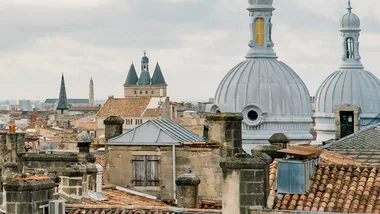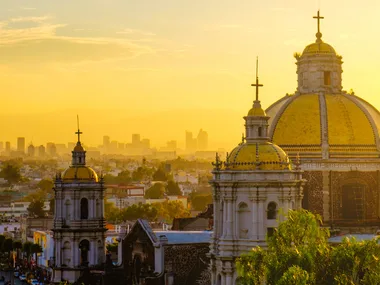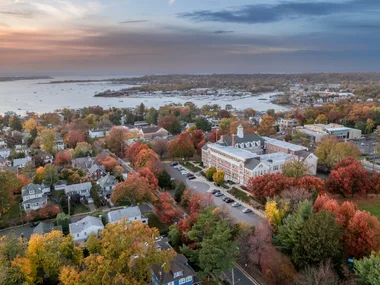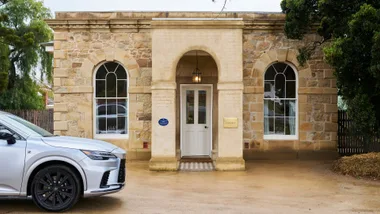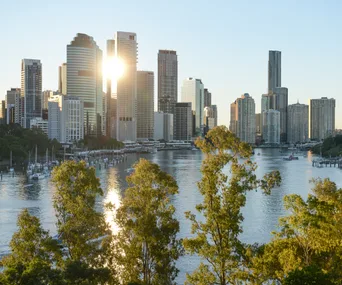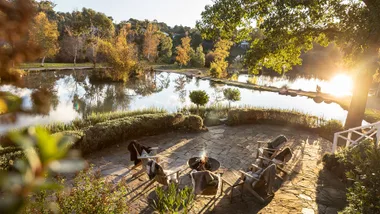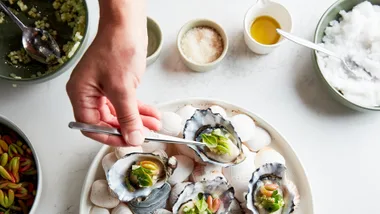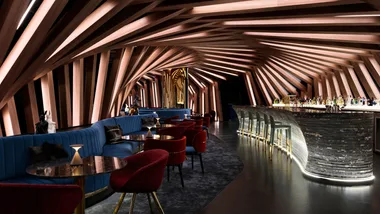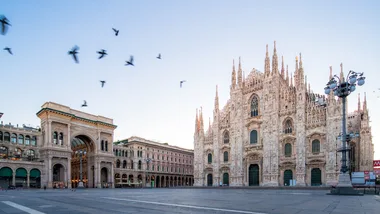GETTING THERE
Qantas flies direct from Sydney to Dallas and LA, and direct from Melbourne to LA, with connections to Mexico City. qantas.com
EAT
Journalist and food writer Arisbeth Araujo leads bespoke small-group walking tours of Mexico City themed around everything from tacos to mezcal. arisbeth@trincheestudio.mx
Pujol
Calle Francisco Petrarca 254, Miguel Hidalgo, Polanco, +52 55 5545 3507, pujol.com.mx
**Quintonil
** Newton No 55, Miguel Hidalgo, Polanco, +52 55 5280 1660, quintonil.com
**Mercado
** San Juan Ernesto Pugibet esquina Plaza Buen Tono, Centro Xel-Ha Calle Parral 78, Cuauhtémoc, Condesa, +52 55 5553 5968
**MeroToro
** Calle Amsterdam 204, Cuauhtémoc, Hipódromo Condesa, +52 55 5564 7799, merotoro.mx
El Parnita
Av Yucatán No 84 Local E2, Cuauhtémoc, Roma Norte, +52 55 5264 7551, elparnita.com
Licorería Limantour
Álvaro Obregón 106, Cuauhtémoc, Roma Norte, +52 55 5264 4122, limantour.tv
Lalo!
Zacatecas 173, Cuauhtémoc, Roma, +52 55 5564 3388, eat-lalo.com
Buna 42
Orizaba 42 Col Roma, +52 55 67245578, buna.mx
Nicos
Av Cuitlauac No 3102, Azcapotzalco, Claveria, +52 55 5396 7090, nicosmexico.mx
Could it be that Mexico is the only nation whose flag involves lunch? Between its bands of green and red an eagle perched on a prickly pear feasts on a snake, a reference to a legend that the Aztecs founded Mexico City on the site where they found an eagle on a cactus eating a serpent.
The city was built in 1325, the oldest capital in the Americas, one of only two founded by native Americans. Now the time has come to acknowledge it as one of the great eating cities of the world. At the top tier, the names of its great restaurants might not be as numerous as in Paris or Tokyo, but its brightest lights are as inventive and inspired as any in the world, and they draw on a deep well of inspiration. On the street, in the markets and in home kitchens lives a cuisine that has ancient roots. It is complex in its blending of regional, social and cultural influences, it takes in the pre-Hispanic, the colonial and the modern, and accesses a biodiversity unequalled anywhere else in the world. In their day the Aztecs called Mexico City the belly button of the universe. The feasting hasn’t stopped since.
Right now the person with his finger on the belly button is Enrique Olvera. He has been celebrated at home for many years now, but has latterly won Mexican cuisine new respect in the wider world. Cosme, the restaurant he opened in Manhattan in 2014, changed the way Mexican food was perceived and understood in the US. “Almost everything you taste at Cosme seems new without being forced or mannered,” wrote Pete Wells in a three-star review in The New York Times. “It isn’t the kind of Mexican cooking that can be learned on a vacation.”

Pujol’s all-vegetable green mole.
Back at his headquarters at Pujol in Mexico City’s glam Polanco district, Olvera continues to explore his nation’s food with a singular blend of playfulness and respect. A meal at the restaurant may begin with the offer of a Margarita made with tepache, a ferment of pineapple skins, the drink served in a glass rimmed with salt mixed with crushed dried maguey worms. He lines a snow pea with tiny soft ant eggs sautéed with serrano chilli and flavoured with epazote leaf. From course to course his food is crisply plated but also finely tuned for the palate, ingredients delineated with lines of citrus, heat and smoke.
.jpg?resize=877%2C1024)
Snow pea and escamoles (ant eggs) at Pujol.
His mole madre, a “mother mole”, takes the rich and complex reduction and uses it not to cook turkey or pork, but serves it as sauce alone, a circle of black with a bullseye of red spooned carefully into its centre.
It could be a perfect example of contemporary cooking tipping well into emperor’s new clothes territory – a gravy looking for a roast – but in the context of a tasting menu at Pujol it’s an expression of purity, confidence and flavour. Olvera has taken the idea of the sauce being better the day after you cook it to an extreme: based on three chillies and chocolate, tomatoes, onions and garlic, it has a dark, gently smoky, almost tobacco-like quality, drawn out after simmering on the stove for 760 days and counting. The red mole in the centre is fresh, its brightness coming from guajillo chillies. It’s served with nothing more than superb tortillas flavoured with sesame. “Our food philosophy is that we like a lot of flavour,” says Olvera. “It’s as simple as that.”
The other chef really nailing the modern Mexican brief is Jorge Vallejo. His restaurant, Quintonil, a scant few blocks from Pujol, comprises a few small, informal rooms, but his cuisine overflows with energy and good ideas.

Chef Jorge Vallejo of Quintonil.
Huitlacoche, a fungus that grows on corn in much the same way that chewing gum grows underneath school desks, becomes beautiful teamed with seaweed as the base for a clear, savoury broth poured into a bowl with golden squash blossoms. There’s the same sort of clarity in an upside-down smoked crab tostada decked out in coriander cress and habanero mayonnaise. The thinking is fresh, but the flavours remain honest.
On the street, the smells of ripe fruit mingle with a hint of ash in the air. Mexico City sits in an extinguished volcano, and heavy clouds gather at the lip of the caldera, threatening rain. A panoply of architectural influences meet in the upmarket neighbourhoods. Aztec curves become Deco streamlining become the cool planes of Modernism and back again, Kahlo blue to masa yellow, all on one leafy block. And the street food scene is a thousand times more diverse.
.jpg?resize=877%2C1024)
A street-food stall in Mexico City’s Roma neighbourhood.
You could spend a lifetime studying just the taco culture of Mexico City, Arisbeth Araujo tells me. “The word for Mexico City is diversity,” she says. “It would be a mistake to only go to these great restaurants without seeing where the flavours come from.” Araujo’s a journalist, a periodista gastronómica, and also leads food tours. I meet her one sunny Sunday morning outside the Mercado San Juan; the plan is to walk around the neighbourhood’s taco stands, but first we wander the market, a favourite with exacting cooks.
Inside, bushels of dried crickets and mealworms stand by great baskets of morels and stalls piled high with bags of dried fish and chillies. Piles of skinny, freshly flayed lambs and rabbits glisten under the lights of the butcheries down the back. The famed Gran Cazador, a supplier of the more exotic meats, lists iguana, armadillo and, alarmingly, lion alongside its cuts of goat and buffalo. Cheese stalls offer sour Mexican Manchego and Cotija, the pungent crumbly cow’s milk cheese that’s scattered over grilled corn or enchiladas. Doña Olivita, who runs the Los Primos spice stand, invites us to taste her mole rojo. “You can tell this has been cooked for a long time,” says Araujo, “and she hasn’t used too much sugar to bring down the spiciness. She’s very proud of it.”

Taqueria El Flaco.
Walking the surrounding streets of the Cuauhtémoc neighbourhood, we hit Cocina Vianey, a barbacoa specialist since 1968, where a cook chops slow-roasted mutton belly and offal with a very large knife, ready to be served on hot tortillas with a full complement of guacamole, fried pork scratchings, coriander, chopped raw white onion and salsa borracha, otherwise known as drunk sauce. Barbacoa’s reputation as a hangover cure is shored up in large part by the sopa made from the leftover bones that’s served on the side, its shimmering surface beaded with droplets of liquid fat, chickpeas and rice lurking at the bottom of the bowl.
We find tlacoyos, flat ovals of blue-corn dough stuffed with beans and requesón cheese, topped with cactus and Cotija. They’re not technically tacos, true, but they get past the line on flavour points. Taquería el Flaco, meanwhile, specialises in tacos de canasta. They’re not made à la minute the usual way, but batched, sometimes scalded with hot lard, and packed in baskets, or canastas, where they steam. Accordingly they’re also called steamed tacos or, better still, tacos sudados – sweaty tacos. Last time I was in Mexico City I ate tacos sudados stuffed with potato; at Flaco they’re filled with stewed, fried pork skin. No one is claiming tacos are a health food.

Taco viajero at El Parnita
One of the most appealing things about Mexico City for the food-focused traveller is that it’s not one of those cities where it’s all top and bottom dining and no middle ground. The city and its food culture are more than substantial enough to offer interest at every level.
You want drinking food from the Yucatán peninsula served in a convivial environment? Try Xel-Ha, a cantina in Condesa that more than holds its own in the cochinita pibil stakes. Seafood in the Baja California style dressed up for the money crowd? Don’t miss the sea urchin at MeroToro. A neighbourhood bistro that punches above its weight with creative cooking? That’ll be Maximo Bistrot. A spin-off café for Mimosas and lattes and croque-monsieurs complementing the chilaquiles (aka the thinking person’s breakfast nachos) and huevos rancheros? That’s Maximo’s sibling, Lalo!, one long table in a long room strung with globes and splashed with neon and bright playful aerosol art down one wall: smiling whales, fish, birds and wrestlers.

Diners at Lalo!.
How about somewhere dedicated to the art of the long late Sunday lunch, replete with good vibes and vast glass jars filled with aguas frescas, the house-made soft drinks – guava and mandarin, perhaps? You’re going to love El Parnita. Somewhere that plays The Strokes and Weezer while making some of the city’s best third wave-style coffee exclusively using beans grown in Mexico? Try Buna 42. A hip cocktail bar where the drinks are smoky and strong? Make a beeline to Licorería Limantour in Roma.
But what about the gold-standard for guacamole, prepared tableside in a friendly formal neighbourhood restaurant that seems to have barely changed since the 1950s? For that there’s only one choice: Nicos, a much-loved landmark that’s been doing its thing for nearly 60 years in the workingman’s suburb of Azcapotzalco, about a 30-minute cab ride from the city centre. Prepared tableside from a trolley laden with a basket of avocados and clay bowls of chopped tomato, onion, coriander and chillies, the famed guac here is more a business of crushing and folding with a fork and a spoon in the stone molcajete than mashing or pounding. It’s light and creamy, but it has texture, and because the Nicos crew insist that fresh guacamole needs no citrus, the flavour of the avocado comes through clear and clean. They also bust out the trolleys for the Caesar, the coffee and – yay – the tequila and mezcal. It’s the sort of place, too, where politicians and celebrity chefs rub shoulders (and clink shots) with the neighbourhoods nurses and students.
Talking with Jorge Vallejo later, we discuss the connection between the Mexican food of the future, and the past, the food of its streets and its most exclusive tables, and he hits on a notion that will immediately ring true to anyone who has taken the time to get to know the capital and its way of eating. “I don’t think we can make Mexican food too high-concept,” he says. “It’s so close to the people and to the earth.”

